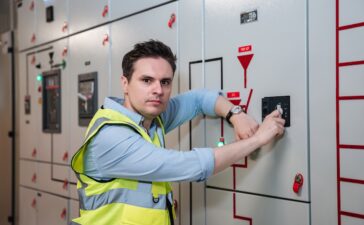Just imagine you get to enter the world where you can fight flames without being hurt or something broken. Virtual reality (VR) technology is changing the paradigm in which we view safety training, especially the use of fire extinguishers. The fires are hazardous since they are unpredictable and have the ability to cause havoc in a short period of time; thus, anyone who is likely to encounter the emergencies needs to be well trained.
Conventional approaches have always been conducted through the use of practical drills and classroom trains. They are also effective but somehow fail to impress with realistic experiences likely to still be with the participants. VR to the rescue- a pioneering technology that exposes trainees to real life like situations improving their abilities and courage at moments of crisis.
In this writing we shall discuss how VR technology has revolutionized the training involving fire extinguishers. We are going to analyze existing practice, outline conventional difficulties, and reveal advantages of such radical approach. Let us jump into safer firefighting education!
Current Methods of Fire Extinguisher Training
Traditional training of fire extinguishers has been other than classroom-based with practical training. During such sessions, the trainees are taught various kinds of extinguishers and their applications using lecture and demonstration sessions.
The patients normally observe video or presentation showing fire safety methods. Thereafter, they may undergo practical tests as they get to practice using the real extinguishers. This method assists in creating an idea on the dynamics of fire suppression among the participants.
The approaches, however, do not provide the immersion of the real world. Trainees can experience being detached to presented scenarios. Also, it lacks many chances of practice outside the complex settings that could affect the level of confidence in emergencies.
Further, the logistics factor is involved- it is inconvenient and expensive to organize live training programs in organizations. With the practices remaining dominant in the course of fire safety teaching, numerous individuals are examining alternative ways that may make it more interesting and cover the gaps that still exist in the learning process.
Limitations and Challenges of Traditional Training Methods
The theoretical way of training people on how to use fire extinguishers is usually in a classroom after which the practical sessions are done. Although this strategy comes in handy, it is associated with serious demerits.
There is a problem that the participants will not remember much information presented as a lecture. It is easy to forget theoretical knowledge unless reinforced with some practice. There is a shortage of time in the training process hence the people may not have sufficient time to practice operating fire fighting gadgets.
Also there are seldom opportunities for training in real-life situations. Apprentices are usually exposed to a prop or a fixed extinguisher and not dynamic situations. Such unrealism may result in higher anxiety when faced with real emergencies.
More so, the conventional approaches involve physical space and resources to demonstrate them, which may be cost-prohibitive and logistically complex. These inhibitors tend to limit accessibility to effective training to most organizations, particularly small ones that have limited budgets.
The Benefits of VR Fire Extinguisher Training
The experiences found in vr fire extinguisher training cannot be rivaled by the more common approaches. The participants can practice their skills through realistic simulations and thus they do not fear the real flames.
Scenarios may be repeated by learners as many times as necessary, and it enhances knowledge and confidence. These repetitions assist in entrenching memory via time.
Secondly, VR training is viable and versatile. Organizations can train more than one employee at a time, without care about the location. This is flexible as it lowers the downtime with maximum learning potential.
It is also supplemented by real-time feedback. The trainees also get immediate feedbacks on how they performed and this helps speed up their growth and avoiding improper methods.
Through operating virtual environments to replicate the different kinds of emergency scenarios, the participants get to learn how to adjust fast in times of pressure, and this is a vital trait to attain when one is confronted with an emergency circumstance in the real world.
Real-Life Success Stories of VR Fire Extinguisher Training
The efficacy of fire extinguisher training that uses VR is gaining much ground as establishments implement the new technique. Many of the firms have testified of great growth in the confidence and competence of their employees in handling fire, once they are able to control fire.
As an example, one of the major manufacturing companies adopted VR training of the staff members due to failure in the traditional approach. The findings were impressive. The workers showed greater mastering of vital skills and a shorter reaction time in case of life drills. They became more confident and that confidence was carried through into their safer, better actions on drilled fires, that in turn helped to lower risks and raised safety standards overall.
Another example concerns a leader in the industry of hospitality that resorted to virtual reality training of their members. They have observed a tremendous level of increased engagement at trainings after the implementation of VR modules. Employees were more ready to emerge things that could go wrong in case of fires and this increased the awareness of safety measures in the work area.
Such narrations demonstrate not only improved learning achievements but also create an atmosphere in which the safety culture prevails. In the world of high-tech solutions, such as VR, proliferating in organizations, the future of fire extinguisher training seems bright indeed- it promises to be effective, as well as providing a sense of calm in a dangerous scenario.
As further research is being conducted in the sphere of technology, we are sure to see even more new technologies in the future which will change the route we take when it comes to emergency preparedness- and eventually a safe environment, starting with all.





